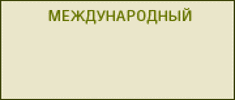Authors
Barinov Sergey V.
|
Degree
|
Cand. Sci. (Eng.), Associate Professor, Mechanical Engineering Technology Department, Vladimir State University |
|---|---|
|
E-mail
|
box64@rambler.ru |
|
Location
|
Vladimir, Russia |
|
Articles
|
Calculation of temperature fields based on a finite element model of the additive synthesis process of a productThe work is devoted to the creation of a hybrid finite element model of the process of additive synthesis of a product by the Wire Arc Additive Manufacturing/3D Metal Print method, supplemented by a block of wave strain hardening of the synthesized product. The main result obtained is the proposed original approach to the mathematical modeling of fundamentally new processes of synthesis and hardening of a wide range of products manufactured from various materials in the form of wire, which can be extended to the entire class of additive synthesis processes with periodic or post-processing. The main feature of the approach is the hybridization of calculation models, while, unlike known solutions, significant attention is paid to the processes of exchange and transmission of information between the models of synthesis and hardening processes. A distinctive feature of the hybrid model is the need for a periodic exchange of information on the geometric and temperature parameters of the synthesized areas at a specific point in time. The novelty of the hybrid model is in the application of coordinated approaches to solving thermal and mechanical problems in a three-dimensional formulation in the ANSYS environment, taking into account the natural dynamic heat flows that form in the synthesized product and the installation table modeled by the finite element method. Calculation of continuously changing dynamic temperature fields in the synthesized product with additional optimization and visualization capabilities is an important structural part of the model. The studies performed allowed us to identify a significant range of the ratio of the product and table volumes 30 ≤ Vс/Vи ≤ 100 and patterns in the formation of temperature fields when changing the table parameters. Read more... |



